Growing and caring for arugula outdoors
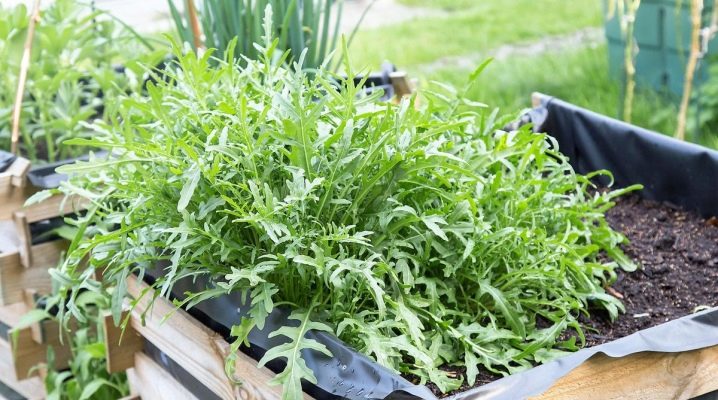
Rucola is an aphrodisiac that is in demand among gardeners for its nutty spicy taste. From the material of the article you will learn about its appearance, the nuances of planting in open ground and the features of care.
What does it look like?
Rucola, or Indau, is a herbaceous annual, an unpretentious plant of the cabbage family. It contains many vitamins, micro- and macroelements. She is a salad culture.
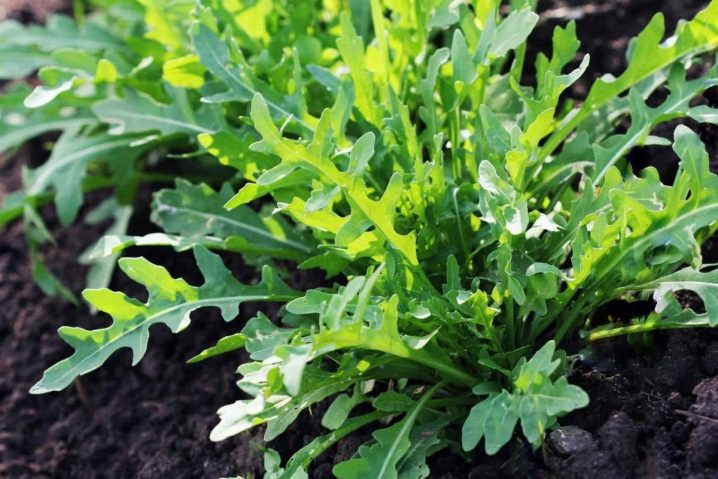
The foliage color of different varieties can vary from light to dark green. The shape can be pointed or rounded. Some species resemble dandelion leaves.
Stems are branched, slightly pubescent, sometimes completely glabrous. The foliage is fleshy, scattered hairy. The height of the culture in different regions of the country can reach 40-50 cm.
The inflorescences are collected in brushes, the flowers have jagged edges. The flowers are usually white or yellowish with characteristic purple streaks. The growing season is in mid-July.
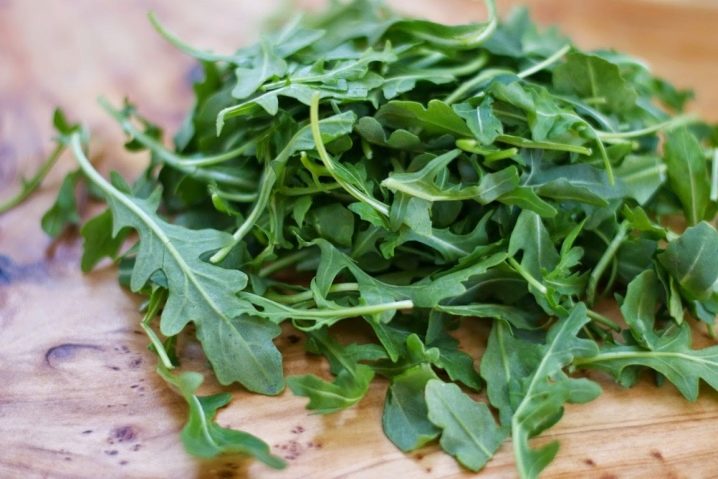
Popular varieties
Arugula is garden and wild. The first is called eruka, the second is a thin-leaved two-row. The plant has many varieties. Several varieties are most popular.
-
Arrows of Cupid - mid-season high-yielding variety with a growing season of 35-38 days. The height is about 30 cm, the leaf plates are narrow, oblong.
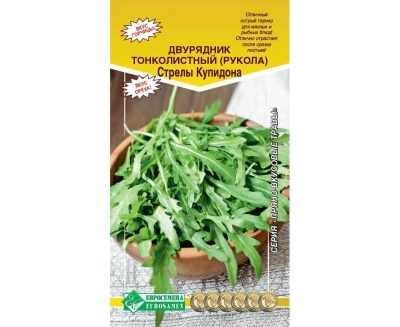
-
Dikovina - undersized (from 20 cm) variety, blooms within 28-30 days. Differs in an erect stem, small inflorescences. The flowers are creamy, the greens are sweet in taste.
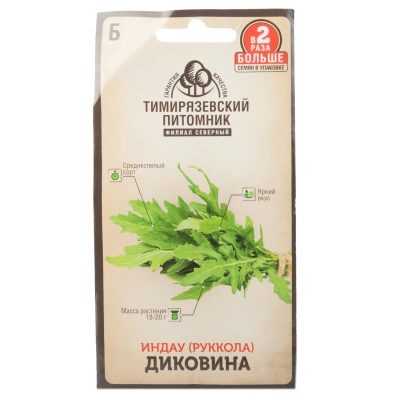
-
Poker - an early ripe species of rucola with a flowering of about 1 month and a height of 20 cm. It is distinguished by bright green large foliage and a bittersweet taste. Seed germination lasts up to 4 years.
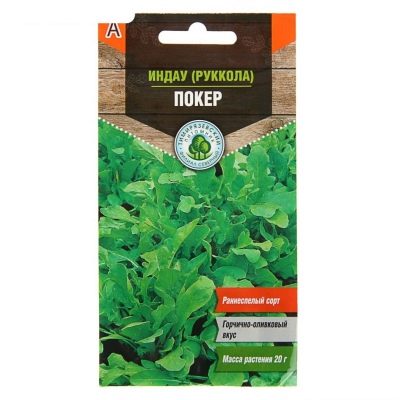
-
Olivette - an early ripening variety with a three-week growing season, 17-20 cm high. A high-yielding perennial, characterized by a rounded leaf shape, nutty taste and piquant bitterness.
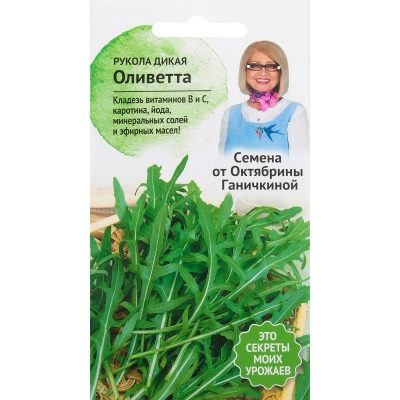
- Spartak is considered a diabetic variety. It is rich in essential oils and vitamins. Ripens within 3-4 weeks, yields a good harvest. It has a pleasant aroma.

Landing dates
Arugula is planted in the spring. The optimal planting time is mid-April. In cold regions of the country, it is planted in the soil in early May. This is the optimal time for propagation of the culture by the seedling method.
It is necessary to plant arugula in the ground when the temperature outside warms up to +10 degrees. Under comfortable conditions, the sprouts appear within 3-5 days.
Arugula is sown in August, when the summer heat subsides. In the western regions - at the beginning of the month, in the southern regions - in its middle or end.
Spring planting is more juicy leaves.
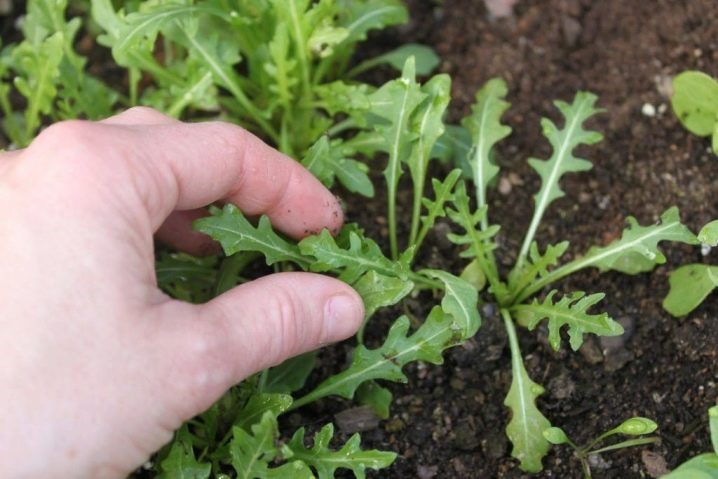
How to plant?
In order for arugula to give a high yield of juicy greens, it must be properly planted. It is important to consider compatibility with other plants, choose the best place, and provide proper care.
Seat selection
The landing site should not be open. Culture cannot stand the scorching rays of the sun. The place can be lit, but there should be a diffused shadow.
Rucola grows well and develops in a light, sufficiently fertilized soil with a neutral reaction. If the soil is acidic and clayey, it must be deacidified with lime or dolomite flour before planting.
The plant needs a warm climate, it gets sick when planting in areas with a high groundwater table. This leads to waterlogging of the root system.
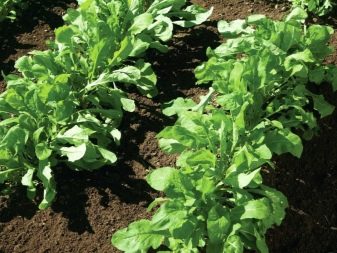
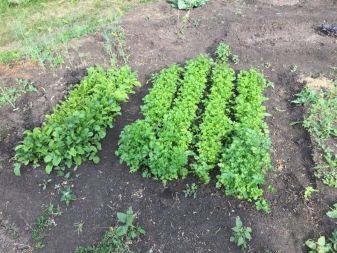
Seed selection
Fresh seeds are used for planting. The longer their collection period, the less germination. The seeds do not need any preliminary preparation.

If they are not purchased in a specialized store, they are disinfected so as not to introduce pests and microorganisms into the ground. To do this, they are treated with hydrogen peroxide:
-
peroxide is heated to 40 degrees;
-
the seeds are placed in a special container;
-
pour the seeds with peroxide for 10 minutes;
-
the seed is removed and dried on a napkin.
They try to select the variety in such a way that it is suitable for a specific region. When choosing seeds, they rely on the ripening time, as well as their own preferences. Varieties differ in the fleshiness of the leaves, height and flowering period.
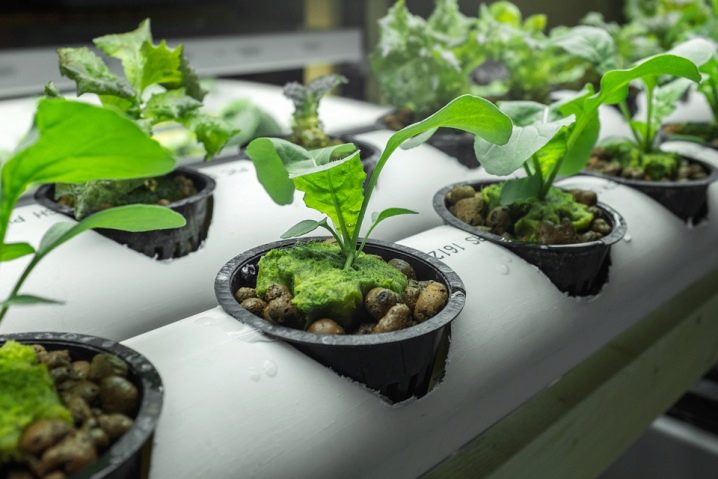
Neighborhood
In order for the plant to give a rich harvest, you need to pay attention to the neighbors among the crops grown. The spice feels great surrounded by potatoes, peas, pumpkins, carrots, tomatoes, watermelons.
You cannot plant it in the same garden bed where radishes, turnips, horseradish, cabbage are grown. Such neighbors negatively affect the growth of arugula. You cannot choose beds for a plant where these crops used to grow.
Neighborhood with cabbage is fraught with an attack of cabbage pests on arugula.
The herb can be used as a mixed hail partner for other plants. Leafy lettuce, onions, celery, basil, calendula will become good neighbors for her.


Sowing
Since arugula seeds are very small, seedling is considered cost effective. For this, containers, soil and the seed itself are prepared.
When planting grass seedlings, the ripening period is accelerated, so the harvest is harvested earlier. You can sow seeds in the ground from the garden on which pumpkin or legumes were previously grown.
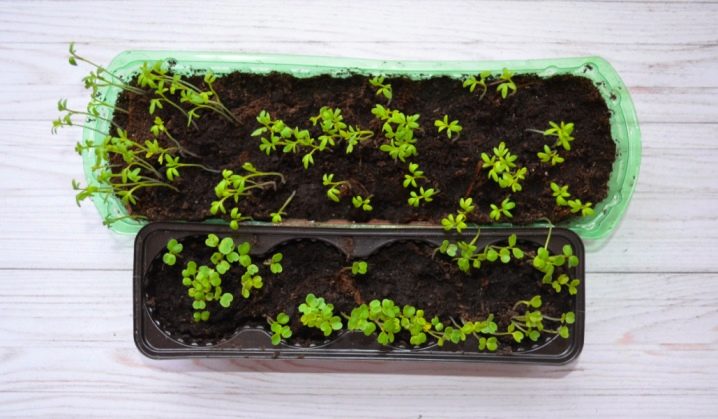
You can plant a plant in peat cups, watering them with complex fertilizer. Several seeds are placed in each glass, deepening them into the soil by 0.5-10 mm.
You can also plant seeds in boxes. If desired, they can be planted in turn, first early, then mid-ripening, then late-ripening varieties. It is important not to forget about picking and timely transplanting into open ground.
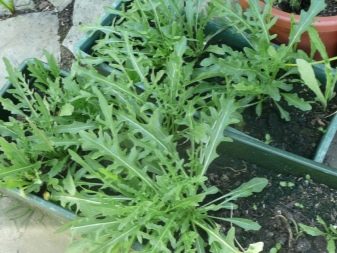
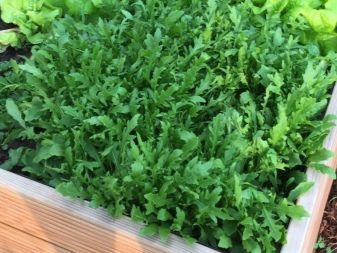
When planting in open ground, the interval between rows is on average 15-20 cm. The classical scheme is an interval of 10x30 cm. The holes must be moistened.
When seedlings are planted in open ground, they are transplanted by the transshipment method. The plants are removed from the container along with the clod to minimize damage to the young roots.
If the seeds are planted in the ground in April, the site is covered with a special material. This will create comfortable conditions for seed germination. Arugula can withstand frosts down to –7 degrees. At lower values, she needs cover.
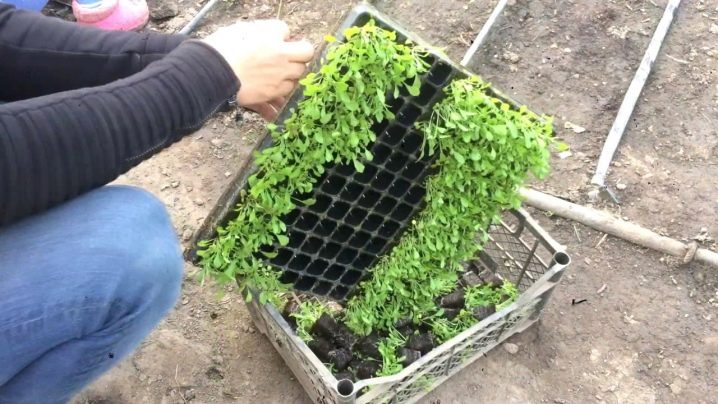
How to care?
Arugula is unpretentious, it does not take much time to care for it. The plant develops well at temperatures from +18 to +20 degrees. With a decrease in values, growth slows down, and the vegetative period increases.
The heat speeds up flowering and shooting times. Because of it, the taste of green mass is reduced. There is a decrease in the juiciness of the leaves. They become rough and almost tasteless.
If you properly care for the spicy grass, 2-3 crops can be harvested per season. You need to collect greens correctly while it is not yet blooming. Arugula grows quickly and can be sown in 3 weeks.
In order for the seedlings to grow strong and healthy, it is better to take the land for containers from the garden on which it is planned to be planted in the future. During this time, young plants will be able to get stronger.
In the future, they will not need adaptation to the environment.
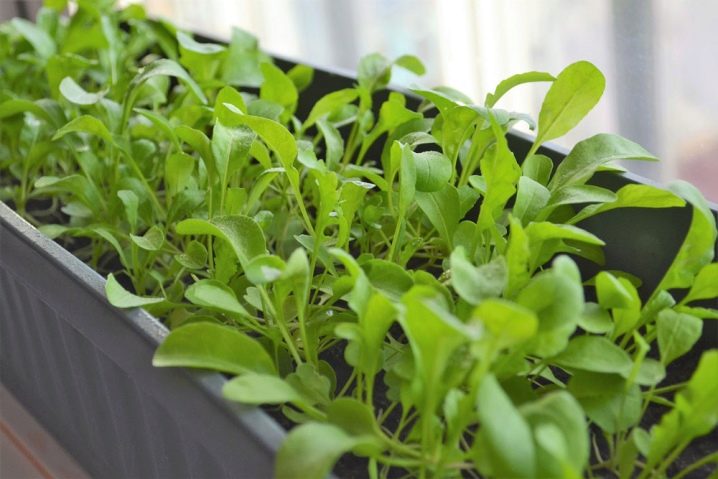
Watering
Despite its vulnerability to waterlogging, rucola is considered a moisture-loving crop. In order to grow in an indau garden with excellent taste characteristics, you need to constantly monitor the level of humidity.
The surface layer should only dry up from time to time. The soil should be moistened, but stagnation of water is unacceptable so that the spice does not become waterlogged.
Dryness makes the greens unfit for human consumption. The frequency of watering depends on the region and weather conditions. If the summer is hot, you need to water the rucola daily. If it is cool, irrigation 3-4 times a week is sufficient.
It is better to water the plant early in the morning or in the evening, when the scorching sun rays will not fall on it. For irrigation, you need to take settled water heated in the sun.

Weeding and loosening
An important point when growing arugula in the open field is to provide the root part not only with moisture, but also with oxygen. To do this, you need to get rid of weeds in a timely manner and loosen the soil.
It is better to thin out the indau, and loosen the soil after moistening. Weeds must be removed along with the roots so that they do not grow back, taking nutrients from the rucola.
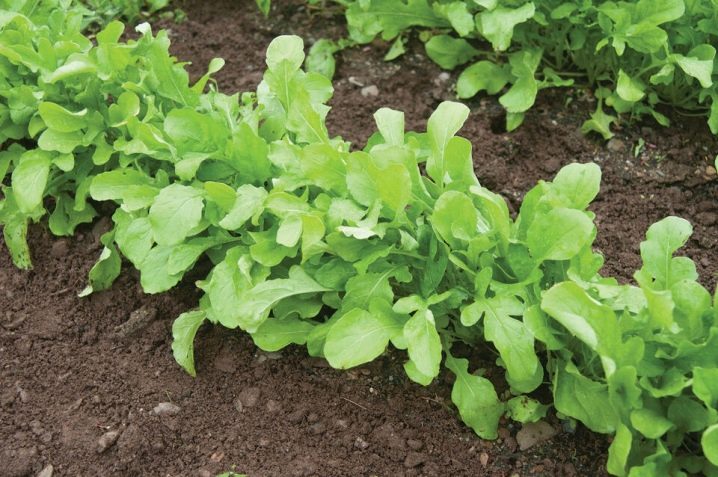
If there is no frequent opportunity to come to the country house to care for the grown plants, it is worth mulching the bed with hay or dry grass. Thanks to this, it will be possible to maintain a moist state of the root zone.
If the plant is planted in clay soil, a little sand should be added to it. Due to this, the soil becomes looser and oxygenated.
Grass planted in a raised bed is even easier to care for. Moisture does not linger on it, the earth warms up faster. This is especially good for a spring planting.
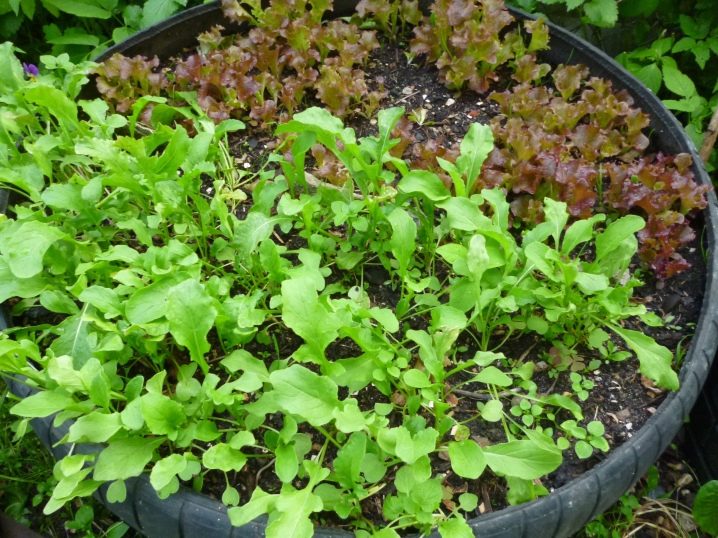
Top dressing
In questions about the need for fertilization, gardeners have different opinions. Usually, the plant does not need nutrients if compost was introduced into the soil in the fall.
If the land in the garden is not prepared, it must be fertilized extremely economically. Otherwise, you may encounter diseases (for example, spotted foliage).
You also need to be careful with nitrogenous fertilizing. The root system of the plant is able to actively absorb nitrates, their amount in the grass will rapidly increase.
An infusion of manure or chicken droppings should be added to the poor soil. The best result will be achieved by fertilizing the soil when growing the second planting in the summer.
In addition to other fertilizers, peat can be used. The best time to fertilize is before planting and after harvest.
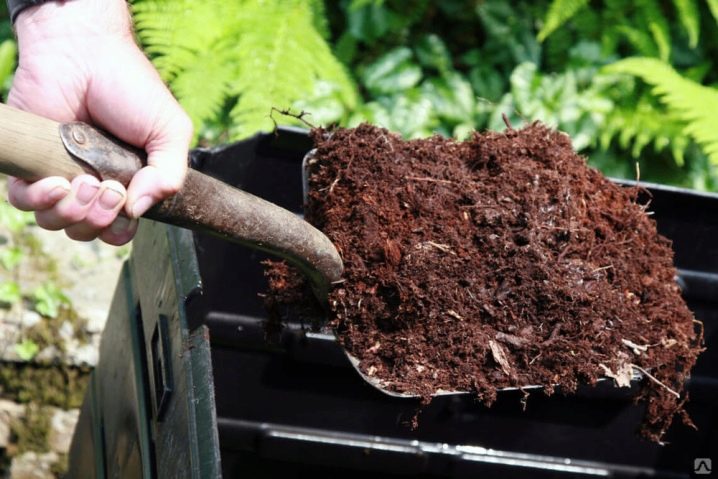
Diseases and pests
The culture is considered hardy. With proper care, it can be grown without any problems. However, if you violate the rules of cultivation, you may encounter fungus and cabbage moth.
It is necessary to fight harmful insects with the help of "Karbofos" or wormwood infusion. To prevent the appearance of fungus, regular weeding is the best measure.
If the plant turns yellow, holes appear on its leaves, this indicates the presence of caterpillars, slugs or cabbage. Their presence speaks of errors in agricultural technology.
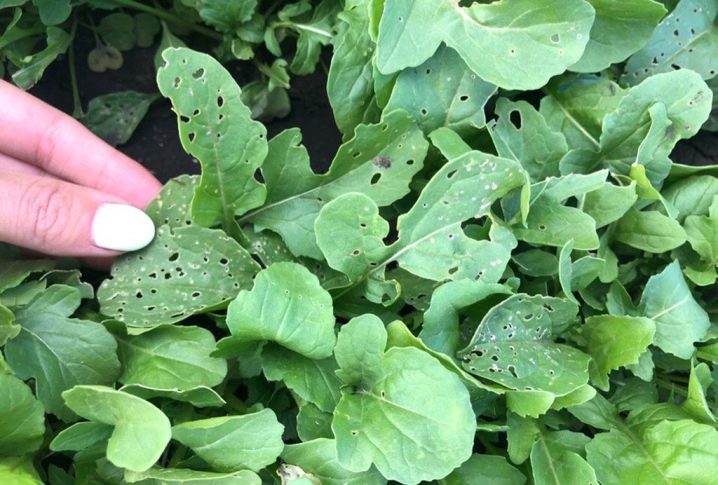
In addition, the plant is affected by peronosporosis, fusarium, and can become covered with white, brown, black spots. The problem must be solved in accordance with the reason for its formation.
To prevent the appearance of cruciferous flea beetles eating leaves, it is necessary to constantly loosen and moisten the ground. Preventive measures will be the spreading of mulch film, as well as the purchase of a special mesh.
It is useless to resort to the use of pesticide spraying. It is ineffective against cruciferous fleas. It is better to get rid of their colonies with the help of "Fitoverm", or organic insecticide "Pyrethrum".
Decis is considered a non-toxic universal remedy. Some gardeners advise using wood ash in the fight against parasites. It is sprinkled with it several times not only the earth, but also the leaves.
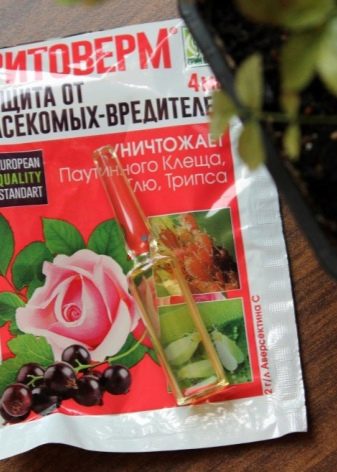

Collection and storage
To increase the yield of a plant, you can turn to the advice of experienced gardeners. They recommend plucking the resulting inflorescences. You need to collect the leaves when their length reaches 10 cm.
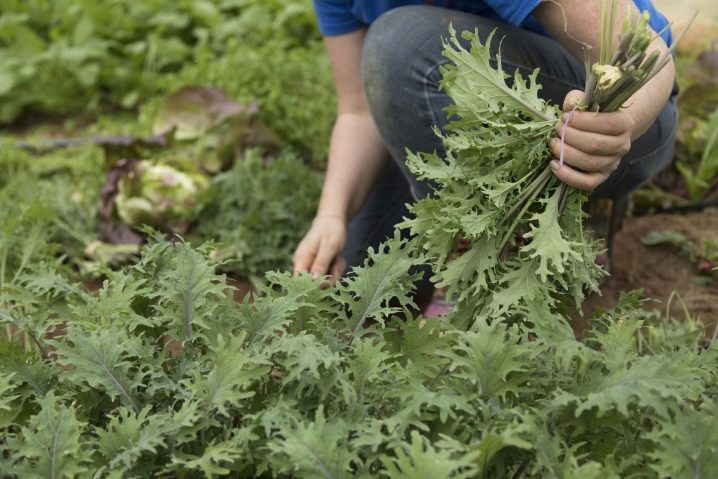
Do not wait for the outgrowth of the leaf mass. The longer it grows, the weaker its taste.
It will not work to prepare a large number of bundles for future use. They can deteriorate quickly.Greens usually remain juicy for up to 10 days if stored in a cool place.
It is best to put it in a plastic bag and place it on the bottom shelf of the refrigerator. You can also store it in a plastic container. The main condition is that the plant should not come into contact with the air of the refrigerator.

To preserve the spice for a long time, they resort to drying or freezing. In addition, the arugula is cut and mixed with salt.
In the latter case, the greens are plucked, washed in cool water, dried on a towel, cut, sprinkled with salt, mixed, put into jars, closing them with plastic lids.
However, salted greens lose some of their macronutrients and vitamins. Despite this, it has the longest shelf life, which is 12 months. Banks are stored in the refrigerator, cellar, basement.
When dried, moisture evaporates from the leaves, they lose their juiciness. This spice can no longer be used for fresh vegetable salads. However, dried arugula can be used to season meat and fish dishes.
You can dry the leaves on plain paper or on a baking sheet with paper on the bottom. Leaking sap can cause surface oxidation. It is better not to cut the leaves with a knife, but to tear them with your hands.
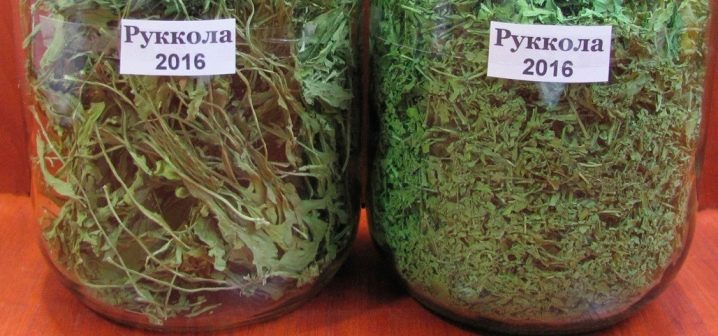








The comment was sent successfully.